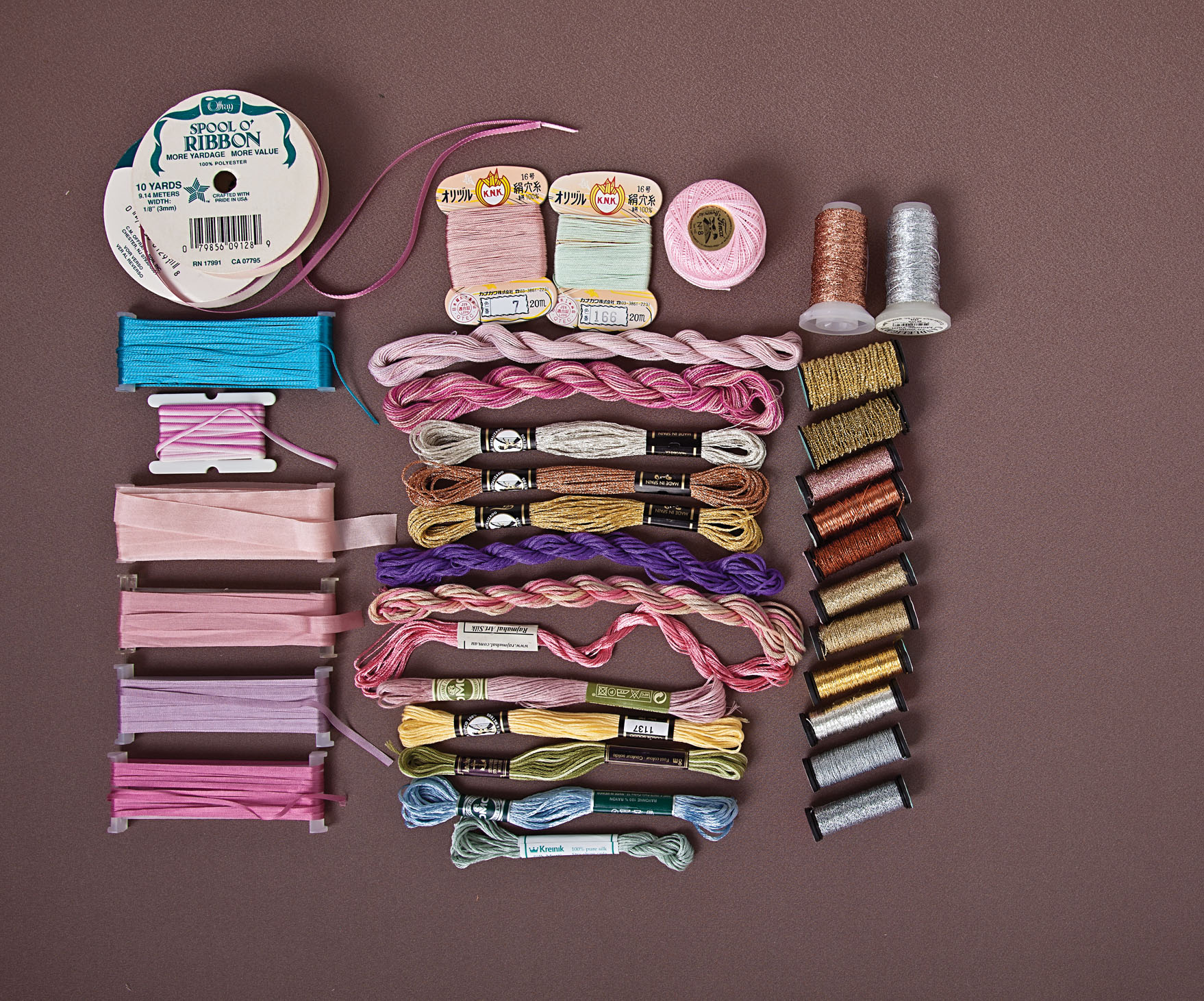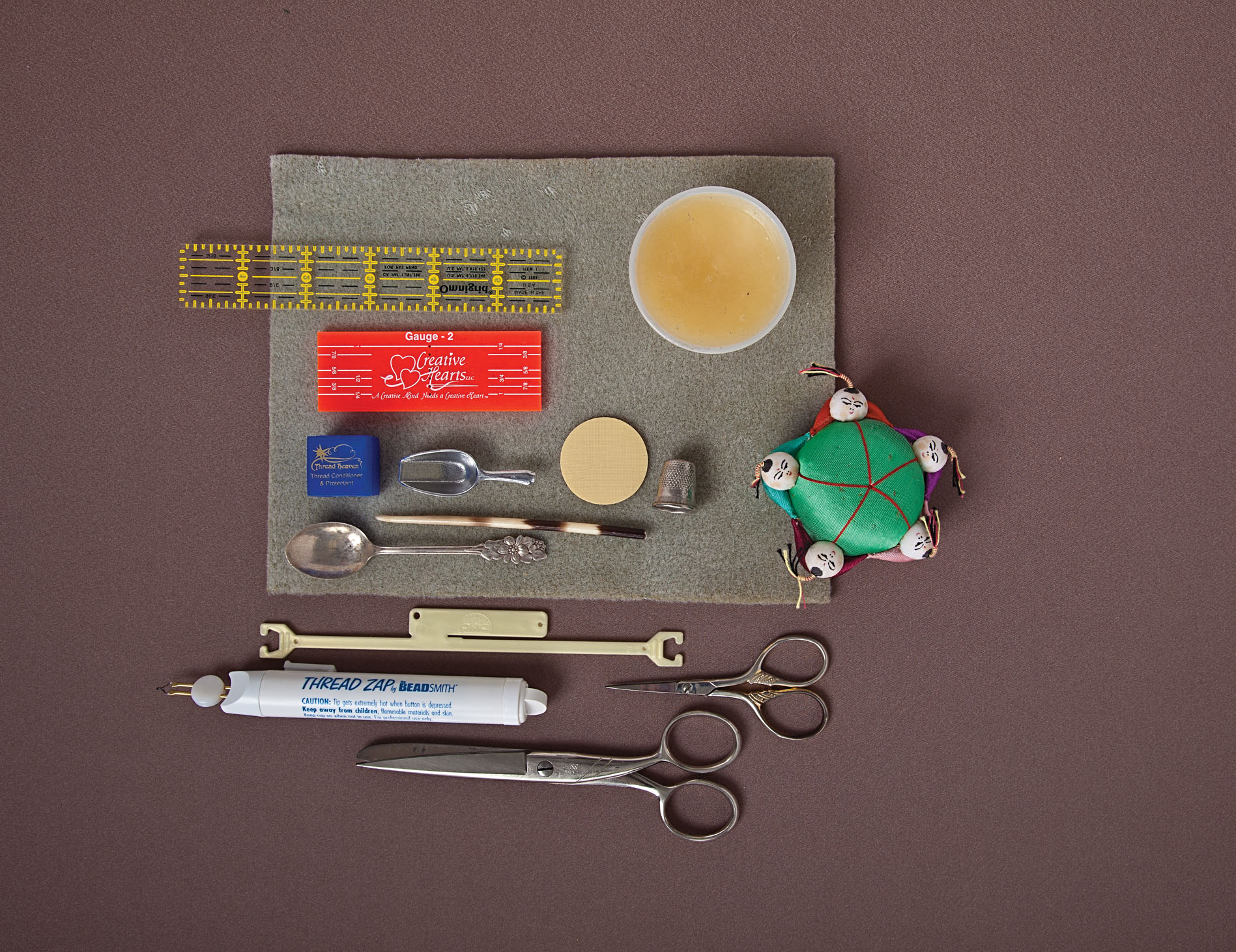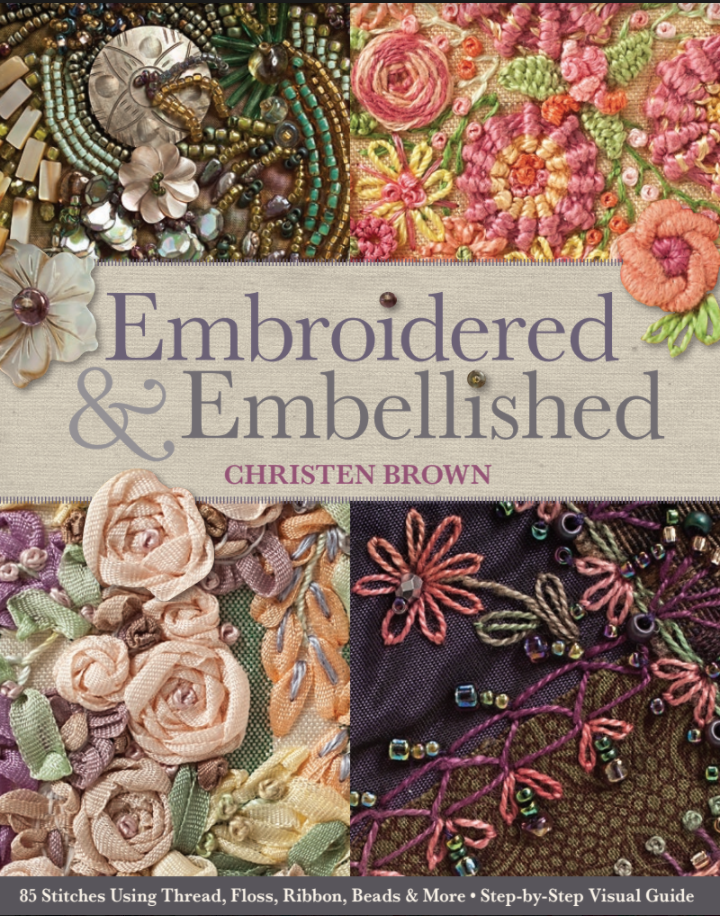Embroidery Materials and Tools
Posted by Christen Brown on Feb 4th 2021
February is national embroidery month! Enjoy helpful tips and tricks from embroidery author Christen Brown all month long.

Embroidery Threads and Ribbons
Embroidery stitches can be worked in floss, twisted threads, metallic threads, and silk embroidery ribbons. Here is a breakdown of the threads and ribbons that I use in my work.
Floss normally comes in a skein of six strands of cotton, linen, rayon or silk threads. Cut an 18” length of thread, use an embroidery needle.
- Cotton floss comes in solid and variegated color ways.
- Linen floss has a dull finish and is available in a small selection of colors.
- Rayon floss has a shiny finish and is available in a small selection of colors.
- Silk floss can have a dull or shiny finish and comes in both solid, ombre and variegated color ways.
Tip: Once you cut a length of thread off the skein, split the group of threads into the amount you want to use. To prevent knots, split each strand then reassemble the group.
Twisted threads are a group of threads that are twisted together to be used as one thread. Cut an 18” length of thread, use a cotton darner or crewel needle.
- Buttonhole twist is highly twisted silk thread and comes on a card or a spool in solid colors.
- Perle cotton comes in a skein or wrapped on a spool, in size #3, #5, #8 and #12, in solid, ombre and variegated color ways.
Tip: While embroidering the working tail can unravel, clip off the raveled end in order to prevent tangles and knots.
Metallic threads come in floss, braids, and twisted threads. Cut a 16” length of thread, use a larger eye needle than you would for the equivalent cotton thread.
- Floss comes in a skein of six threads and is available in a small selection of colors.
- Braids are a group of tightly twisted threads that come in a small selection of colors.
- Twisted threads are available with a slight or more firm twist and are available in solid or variegated color ways.
Tip: Metallic threads can dull your embroidery scissors, designate a pair of craft scissors to be used just for these threads.
Silk embroidery ribbons come wrapped on a card or spool, in sizes 2mm, 4mm, 7mm, and 13mm and larger. They come in solid, ombre and variegated color ways. Cut a 15”-16” length of ribbon, use a chenille or tapestry needle.
Designer and specialty ribbons can be used for some of the embroidery stitches that are specific to embroidery ribbons and also for ribbonwork flowers.
Tip: Wash your hands frequently when working with any type of thread or ribbon.
Beading threads such as Nymo and Silamide are used to stitch beads, buttons and charms to the fabric base. Cut a 2-yard length, thread into a beading needle, double the thread, wax and knot the end.
Tip: To remove any wax build up on the fabric surface, brush the area with a clean and unused toothbrush.
Embroidery Tools

These are some of the tools that I find indispensable:
- Bead scoop for picking up loose beads
- Dritz Seam Gauge Creative Hearts Gauge-2, to measure the distance between stitches
- 6” clear quilter’s ruler
- Needle gripper, to pull the needle through layers of fabric
- Pincushion
- Porcupine quill or cocktail straw (not shown) for use in silk ribbon embroidery
- Scissors, for both embroidery and ribbon
- StitchBow organizers, to keep floss from tangling
- Synthetic beeswax, to condition beading thread
- Thimble
- Thermal bead mat, to keep beads from sliding around
- Thread Heaven conditioner, or Thread Magic (not shown) to minimize knotting of sewing and embroidery threads
- Thread Zap pen (or Thread Zap II pen not shown), to fuse the raw edges of woven ribbons

This book offers you 85 stitches that range from traditional stitches, silk ribbon embroidery stitches, raised and textured stitches and beaded stitches. There are 8 projects that range from simple to more advanced, with additional gallery inspiration.
-







